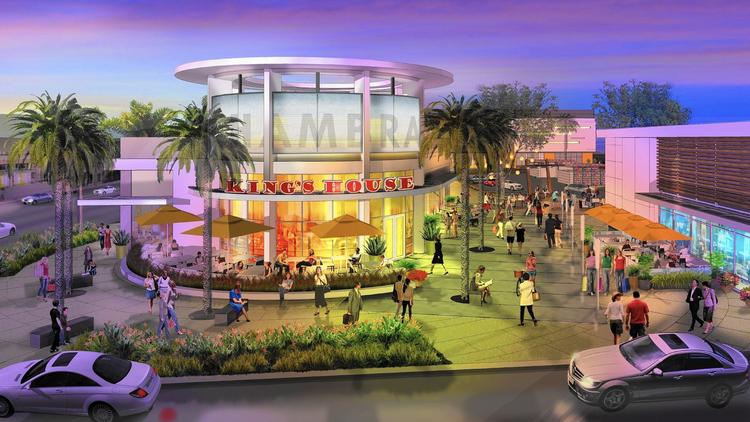The city has suffered with vacant stores situated in the business district, despite the arrival of new stores, theaters and restaurants over the past few years.
Work has commenced at the main intersection of Garfield Avenue and Main Street, where many empty stores have given the area a derelict appearance.
The vice president of acquisitions and development at Shea Properties, Andres Friedman, said the community has not seen a new project in ten years and will be able to support new businesses.
The plans by Shea Properties include the demolition of all the old structures on the 10.5 acre space situated on the southeast corner of the intersection, other than the former Mervyn’s store. This structure will be renovated and turned into a 140000ft² retail complex with a specialty grocery store, restaurants and stores.
There will also be a four-storey apartment complex housing 260 luxury units wrapped around a garage area. Friedman stated that this mixed-use construction will bring energy to the downtown Alhambra area.
Rentals have not yet been set for the apartments, but it will be competitive. Residents will be offered the use of a spa, pool, gym and clubhouse. Most of the apartments will be one or two-bedroom units, with a limited number of studios and three-bed units.
Apartments situated on the south side, facing East Bay State Street, will come with corniced, arched entryways and classic brownstone features. However, on Garfield, the architecture will change to a more contemporary design, by making use of the materials which were found in the commercial section of the complex.
The Alhambra Place area has been dormant for almost six years. There were plans for a project by another developer, but that was shelved when the recession hit.

The new development fits perfectly with the strategic plan the city adopted around 15 years ago to liven up its downtown area.
The land that eventually became Alhambra was part of a Spanish grant during 1771 to Mission San Gabriel. It underwent subdivision during the 19th century, and in 1874, a developer named it Alhambra as requested by his daughter.
By the time the 20th century arrived Alhambra was “a charming Midwestern-style community”. By the 1960s it was built out, with more than half of the population residing in multifamily structures. It was around this time when the retail district in the town started to lose luster.
Friedman says there is energy in Alhambra at night, although the vacancy is felt, the demographics and density are present and all that is needed is the right plan.